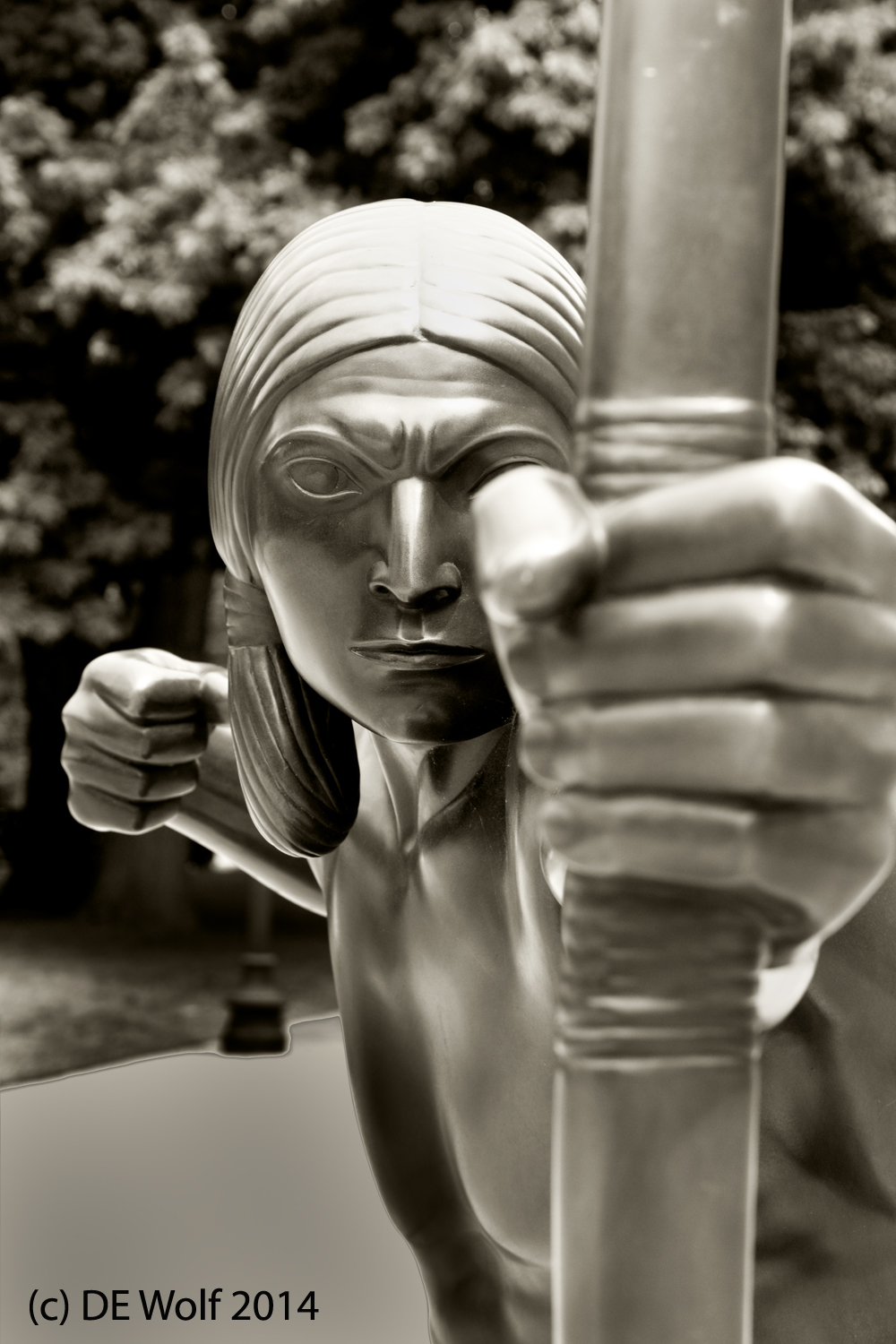On Sunday my wife and I headed into the Boston Museum of Fine Arts to catch up on all of the special exhibits that we had been meaning to see. I was particularly interested in an exhibit on photographic pictoralism and will discuss that in an upcoming blog.
I love museums, and one of the reasons that I love them is that they invariably offer up interesting subjects to photograph. Among my favorites are bronze and marble sculptures. I was enraptured on Sunday, as I always am at the MFA. Unfortunately, I cannot share most of these pictures because one’s not allowed to publish pictures taken in the museum. That’s part of the agreement when you pay your admission fee.
So, I’d like to share today the photograph of Figure 1, which is of a gorgeous bronze of an Indian (Native American) hunter by Pan Manship (1885-1966), the sculptor who brought us the beautiful statue of Prometheus in Rockefeller Center in NYC. And fortunately this sculpture is in a very public place, right in front of the museum’s historic Fenway entrance.
What I love so much about bronze as a subject matter for photographs is: the subtle yet rich golden color and the dramatic way in which it catches light. I immediately take the image to black and white, suppressing all that beautiful color and then I bring it back by sepia toning as a final step. The amazing part, the true magic of digital photography, is magnifying each region of the image and delicately burning in the highlights with a fine digital brush and similarly darkening the subtle shadows. It’s a lot of work, but so often worth the effort.
When I first did this I realized how hard it would be to do it on a silver gelatin work. Although, there were chemical brushwork techniques that the masters used. It is a clear advantage of the digital photographic medium, and best of all you can easily discard your work and start all over again.

